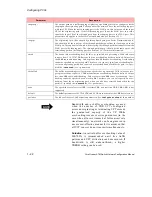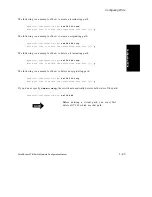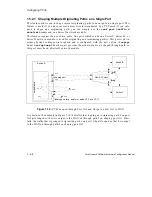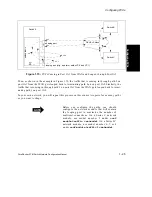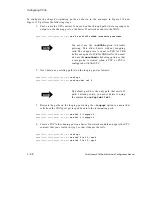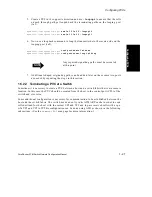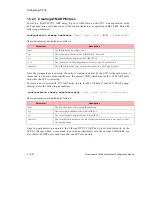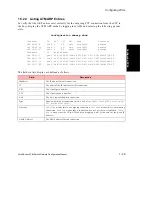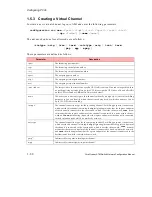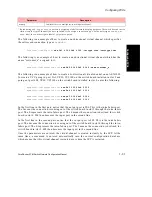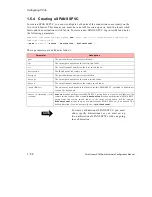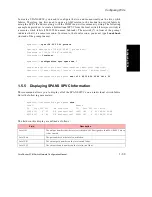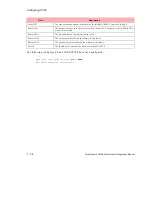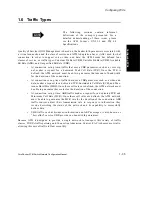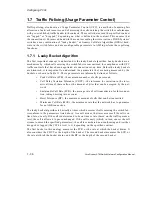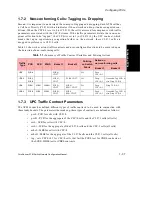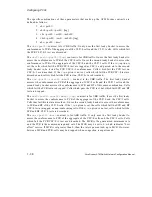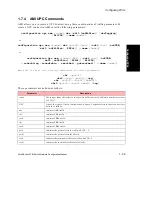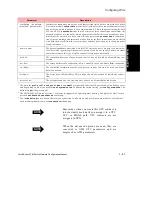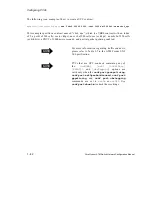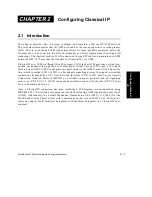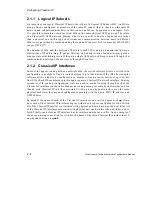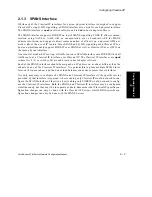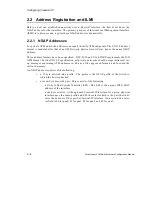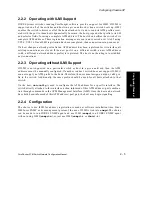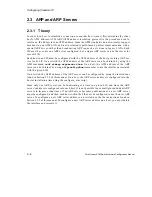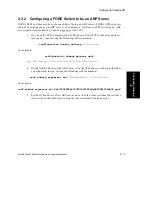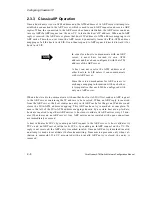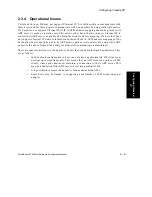
1 - 36
ForeRunner
ATM Switch Network Configuration Manual
Configuring PVCs
1.7 Traffic Policing (Usage Parameter Control)
Traffic policing, also known as Usage Parameter Control (UPC), is a method of ensuring fair
allocation of network resources and of assessing the cells entering the switch for conformance
with pre-established traffic bandwidth contracts. Those cells that exceed the specified contract
are “tagged” or “dropped,” depending on what is defined in the contract. This ensures that
the connections with reserved bandwidth are not exceeding their reservations. FORE Systems’
switches use a combination of “leaky bucket,” or Generic Cell Rate Algorithm (GCRA) hard-
ware in the switch fabric and user-configurable parameters in AMI to perform these policing
functions.
1.7.1 Leaky Bucket Algorithm
The first important concept to understand is the leaky bucket algorithm. Leaky buckets are a
mechanism by which cells entering the switch fabric are monitored for compliance with UPC
traffic contracts that have been negotiated at connection set-up time. Before the leaky buckets
are discussed, it is important to understand the parameters that are being measured by the
buckets, as shown in Table 1.1. These parameters are informally defined as follows:
•
Peak Cell Rate (PCR) - the maximum number of cells per second
•
Cell Delay Variation Tolerance (CDVT) - the tolerance for variation in the inter-
arrival time of these cells, or the amount of jitter that can be accepted by the net-
work
•
Sustainable Cell Rate (SCR) - the average rate of cell transmission for this connec-
tion, taking bursting into account
•
Burst Tolerance (BT) - the maximum amount of cells that can be transmitted
•
Minimum Cell Rate (MCR) - the minimum rate that the network has to guarantee
for an ABR connection
The leaky bucket algorithm is basically a timer which assesses if cells entering the switch fab-
ric conform to the parameters listed above. As a cell arrives, the timer assesses if the cell is on
time, late, or early. If the cell is determined to be on time or late (based on the traffic parame-
ters), the cell is allowed to pass unchanged. If the cell is early (which, in turn, causes the cell
stream to exceed the specified parameters), the cell is considered non-conforming and is either
dropped or tagged (the CLP bit is set to 1), depending on the specified contract.
The first bucket in this analogy measures the PCR, or the rate at which the bucket drains. It
also considers the CDVT, or the depth of the bucket. The second bucket measures the SCR, or
the rate at which the bucket drains, and the BT, or the depth of the second bucket.
Summary of Contents for forerunner series
Page 6: ......
Page 16: ...TOC 10 ForeRunner ATM Switch Network Configuration Manual Table of Contents ...
Page 20: ...LOF 4 ForeRunner ATM Switch Network Configuration Manual List of Figures ...
Page 22: ...LOT 2 ForeRunner ATM Switch Network Configuration Manual List of Tables ...
Page 30: ...viii ForeRunner ATM Switch Network Configuration Manual Preface ...
Page 144: ...3 58 ForeRunner ATM Switch Network Configuration Manual Configuring an Emulated LAN ...
Page 180: ...6 12 ForeRunner ATM Switch Network Configuration Manual ATM Forum PNNI ...
Page 220: ...9 6 ForeRunner ATM Switch Network Configuration Manual Configuring Timing ...
Page 300: ...D 24 ForeRunner ATM Switch Network Configuration Manual Configuring FramePlus Modules ...
Page 308: ...Acronyms 8 ForeRunner ATM Switch Network Configuration Manual Acronyms ...
Page 346: ...Glossary 38 ForeRunner ATM Switch Network Configuration Manual Glossary ...
Page 352: ...Index 6 ForeRunner ATM Switch Network Configuration Manual Index ...

